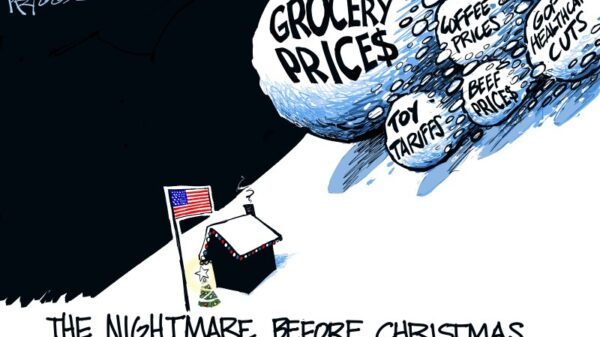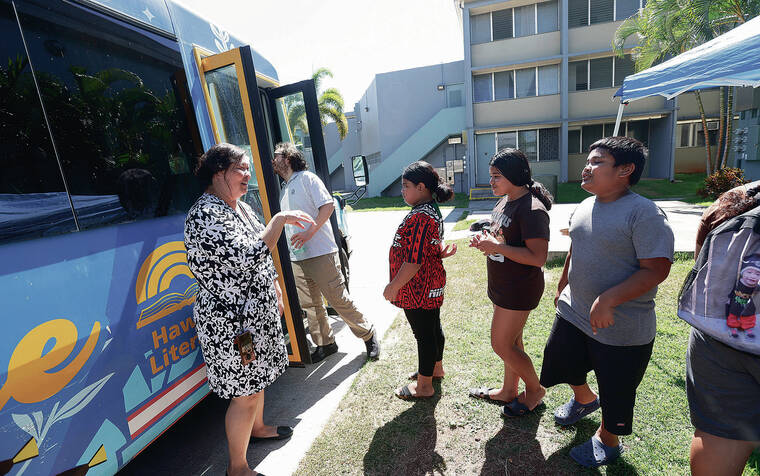Hawaii’s proud legacy as one of the world’s most literate societies in the 19th century contrasts sharply with the present reality: tens of thousands of adults in the state struggle with basic reading and writing skills. This challenge impedes their ability to engage fully in family life, the workforce, and civic responsibilities. Advocates warn that without urgent investment in literacy programs, the state’s economy will continue to falter, health systems will be strained, and intergenerational poverty will persist.
Jill Takasaki Canfield, executive director of Hawaii Literacy, highlighted that while the state performs better than the national average of 22%, approximately 17% of adults face challenges with basic reading skills. In some communities, this rate escalates to 25%. Many adults read at a third-grade level or lower, limiting their ability to navigate essential daily tasks such as filling out forms or assisting their children with homework. These state-level estimates align with findings from the U.S. Program for the International Assessment of Adult Competencies, which indicates that Hawaii’s adult literacy rates fall below the national standard.
Nationally, around 59 million U.S. adults live with very low literacy skills, struggling with everyday tasks without assistance. In Hawaii, the data reveals similar trends across counties, with Honolulu showing mid-teen rates and Kauai slightly higher. However, advocates emphasize that the actual need in low-income neighborhoods and immigrant communities is far greater than these averages suggest.
Community Initiatives Address Literacy Needs
Antoinette Anoc, a resident of Kukui Gardens, brings her seven-year-old son, Dominic, to the bookmobile every Wednesday. She sees the visits as more than just a source of books; they foster trust between families and educational resources, providing a low-cost alternative to expensive after-school programs. Anoc stated, “It brings the community together,” emphasizing the role of organized activities in reducing youth violence.
On a recent visit, 37 children from pre-K to fifth grade participated in activities at the bookmobile, which is stocked with donated books. Seven-year-old Borodus Kintin expressed his enthusiasm for books featuring his favorite character, Sonic, while his sister, Baireen, shared her love for reading anything available. “I like the bookmobile because I can read at home,” she added.
The Economic Implications of Low Literacy
Literacy is not merely an educational concern; it serves as a vital economic and social lever. Brandon Kurisu, a workforce advocate, outlined the implications of low literacy on Hawaii’s economy. Adults with limited literacy skills are twice as likely to be unemployed and earn significantly less than their literate peers. This creates a talent shortage in critical sectors such as healthcare, tourism, and renewable energy, perpetuating intergenerational gaps as children from low-literacy households often start school behind their peers.
A study by the University of Hawaii Economic Research Organization indicated that participants in the Good Jobs Hawaii program who completed training saw an average increase of approximately $1,800 in quarterly wages, amounting to about $7,200 annually. This highlights the economic benefits of enabling residents to access training and job opportunities that require higher literacy levels.
Research from Hawaii Literacy found that around 70% of adults with the lowest literacy skills are unemployed, and those who are employed earn only 44% of what their literate counterparts make, resulting in a lifetime earnings loss exceeding $800,000. Studies also suggest that roughly 90% of individuals struggling with reading comprehension will require state assistance at some point, facing a heightened risk of homelessness.
Nationwide, low literacy costs communities over $225 billion annually due to diminished workforce capacity.
Effective Strategies and Ongoing Challenges
Hawaii Literacy and its community partners are implementing a variety of strategies to combat this crisis. These include one-on-one adult tutoring, family literacy libraries, bookmobile stops that incorporate free book access with tutoring, English language learning classes, and efforts to connect adult learners with job training programs.
Over its history, Hawaii Literacy has served approximately 40,000 adults and youth through its programs. Takasaki Canfield emphasized that the organization tracks learner skill gains, retention rates, and overall service volume to measure the impact of its initiatives on both literacy development and workforce readiness.
While there are success stories, challenges remain. Funding uncertainty, staff shortages, and limited capacity to measure outcomes hinder the ability to scale these programs. Takasaki Canfield noted that fundraising cuts have impacted their ability to track deeper outcomes across all sites.
Business engagement in workplace literacy has increased, yet advocates stress the need for expansion. Kurisu pointed to examples where employers who invest in literacy and digital skills training see measurable returns, including improved employee retention and productivity. The private sector in Hawaii, which relies on a skilled workforce for various industries, has a direct interest in enhancing these partnerships.
“What’s missing is scale and urgency,” Kurisu stated. “Raising literacy is more than a social responsibility; it is an economic imperative.” Hawaii Literacy aims to highlight metrics that resonate with donors and corporate partners, such as the number of individuals served and learning gains, which help sustain contributions. However, Kurisu and other advocates believe employers could play a larger role in funding programs and enabling employees to participate in literacy training.
The juxtaposition of Hawaii’s historical literacy achievements with current challenges underscores an urgent need for coordinated efforts to address this crisis and secure a brighter future for all residents.






































































